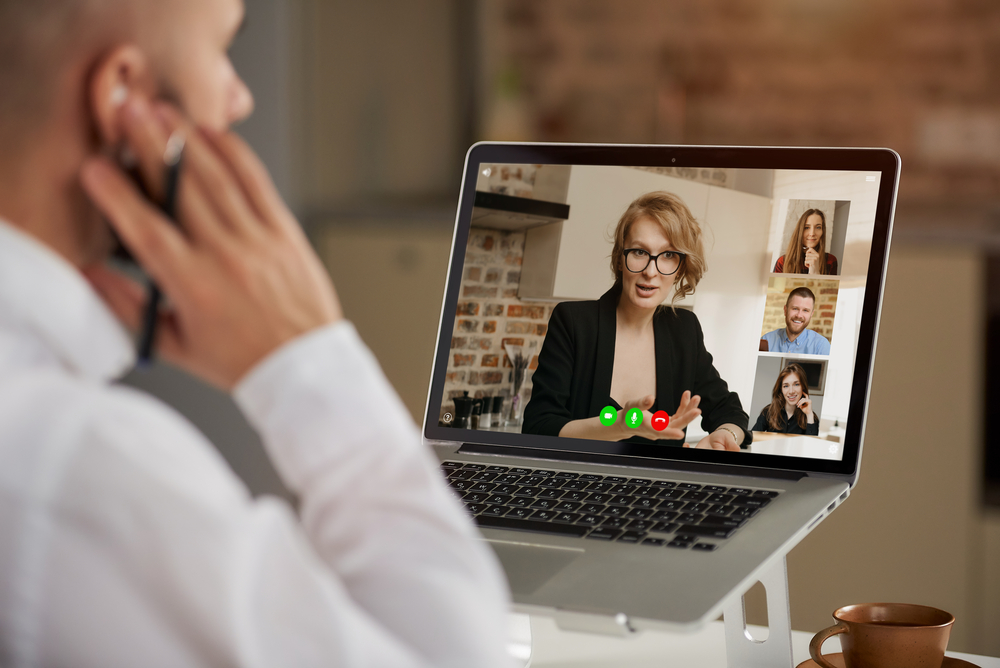It is impossible to predict when and where the next lockdown will be, but it is increasingly clear that working from home is not only viable for legal professionals but is likely to be around for some time.
With so many options, it is hard to know how much stuff you need to buy to make sure that you can work at home as productively as you could in the office.
I have been working from home as a dispute lawyer for the past three years. I’ve put together my top tips on what I have found most useful to invest in. I’ve shared some of the equipment I use to guide you but I have no affiliation with the suppliers. Obviously, everyone’s individual set-up will be different and much comes down to personal preferences. You should consider what is suitable for your IT environment, your specific requirements and your budget.
If you are looking for some help to get started, I hope you can use this list to help make working from home benefit you.
-
Invest in a good chair
Even if you are working from the kitchen table, an adjustable supportive chair will save you a lot of grief. There are several online resources on what to look for in a good supportive chair that conforms to the Australian Standard. Have a look at ergonomics.com.au detailed guide here.
To avoid sitting so much, many people choose an adjustable height desk. I have used an adjustable platform that sits on top of a standard desk. I liked having a variable height for the keyboard but I needed more space to put documents and reference materials. I’ve been much happier with a desk where the entire desktop is raised. If you do get a standing desk, also get an anti-fatigue standing mat to enable you to stand in comfort.
-
Get a decent wireless headset
There is nothing worse than struggling to be heard on a conference call. And after eight hours of back-to-back video calls, any headset will become uncomfortable so it’s worth starting with the best that you can afford.
Look for something that is both lightweight and comfortable. If you can, make sure there is an option to switch on noise cancelling when the neighbour cranks up the power tools.
A wireless headset that can connect to both your phone and your computer is well worth it. The cord to your headset will be constantly in the way or wrapped around things. If you have an iPhone, you can use Air pods which will connect to both devices.
I prefer wearing an over-ear headset with a microphone, I’ve been very happy with the Poly Voyager Focus headset. Jabra headsets are also popular.
A good headset will double as a Dictaphone so that you can dictate either using the inbuilt dictation in Microsoft Word (for Windows 365) or using a tool like Dragon.
A good headset allows you to stand up and move around or switch to audio-only and walk during a meeting. I do this during regular team meetings where I know I won’t be referring to any documents.
-
Don’t type on your laptop
Working on a laptop is fine in terms of capacity and performance. Just don’t rely on your laptop’s tiny keyboard. For increased comfort put your laptop on a riser (or a pile of the Corporations Act compilations) so that the screen is at eye level. For this, you will need a wireless full-size keyboard and a mouse. These enable you to position everything so that you can work comfortably without neck or shoulder strain.
I use a second monitor so that I can refer to other documents. In video conferences, I like to have the video call on one screen and be able to refer to a document on another.
I currently have a 23.8-inch screen which is large enough to look at two A4 documents side by side. In Windows 10 I use the keyboard shortcut Windows logo key + left (or right) arrow key to move the active window to the left (or right) side of the monitor so I can view two documents at the same time.
I have previously had a 27-inch screen which I preferred. Keep in mind that if you don’t have a dedicated space and need to pack up your office, the larger size is more unwieldy. If you won’t be moving around, you could get a monitor arm to position the monitor at the optimal height and free up desk space.
Not essential but useful:
- a mobile phone holder lets me use my phone for video conferences when logged into work VPN which doesn’t have sufficient bandwidth. Click here to see the tablet stand I use for increased productivity.
- a dedicated phone charging station so that I’m always able to charge devices without having cords dangling across the room or crawling under the table.
-
Make it comfortable
Make the space pleasant. Have a plant. A jug of water and perhaps a wireless speaker to listen to music while you work. I have a thermos jug that I use to have hot drinks without having to go into the kitchen (where lurks unwanted distractions of dishes to be washed and snacks in the fridge).
I highly recommend an electric throw rug that will keep you warm without needing to heat the entire house all day. Alternatively, if you suffer from cold feet, you can get an electric foot mat that will keep your body temperature comfortable.
You need good consistent lighting across the whole of your work surface. You might need an extra desk lamp. It’s nice to be able to look away from the screen at a pleasant aspect but don’t position your desk so that there is a bright window behind your screen.
If you are going to be at a lot of video conferences, try not to have a bright window behind you because in the shadows you can look like a mobster in hiding. If you really want to improve the way you look at video conferences, Jason Malouin is a photographer who offers online consultations to help you invest in better lighting and webcam and set up your space.
Instead of replicating the bland office décor, make the most of working from home by adding some personal touches that bring you joy. It can be as simple as a colourful tea mug, some art you like or a photo of your family. Ingrid Fetell Lee has some great ideas on how adds some playful elements to your workspace can help work through a sticky problem.
-
Have a backup Internet solution
In a pinch, you can use the hotspot on your mobile phone as an internet backup. In my experience, one thing guaranteed to bring down the home Wi-Fi is promising to deliver a presentation on something tech-related.
When the rain or invisible gremlins arrive, I have been very glad to have a pre-paid 4G wi-fi wireless Internet dongle. I originally bought it so that I could work from anywhere, but it has become a very useful backup when the home internet connection is interrupted. I’ve had to use it more often than I expected.
The rest
You may be wondering why I haven’t included a printer in my top five essentials. That is because I have managed to work without needing a printer for the past three years. That may not be possible for the way you like to work, however, if you rely on having a printer, make sure you consider the price of ink.
If you only occasionally need to do colour copies, Officeworks or litigation support services will quickly provide the copies you need. You can just get a black and white multifunction printer that can handle printing and scanning large volumes quickly. Also, check that the printer can print and scan double-sided originals from the document feeder.
You can scan documents using your mobile phone. Instructions on how to do this on an iPhone here or use Microsoft Lens or Adobe Scan on android.
I’m able to sign documents using the touch screen of my Microsoft Surface laptop. If your laptop does not have a touch screen you might want to think about purchasing a tablet or iPad.
My final tip is to have a second set of charging cords and a lightweight mouse in a bag for when you are able to travel and work from another location. You don’t want to be crawling under the table to unplug things when you need to be out the door. There is nothing worse than realising you’ve left a cord plugged into your computer at home. Make sure that (lockdown permitting) you can just take your laptop and go.
We can’t always optimise the environment at home the way we are used to in the office but investing in the right equipment – a good quality chair, wireless headphones and laptop accessories – and thoughtfully setting up the space will help you work safely and effectively.
About the Author
Fiona McLay has been a commercial litigation lawyer for over 20 years. As a freelance lawyer, she helps financial services organisations manage regulatory investigations and resolve disputes. Fiona is also a consultant for effective incremental change in boutique law firms. You can follow her @Fionamclay or on LinkedIn

